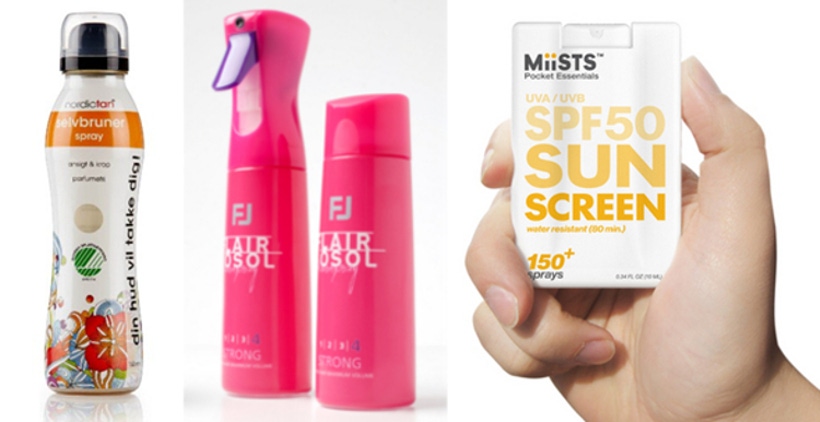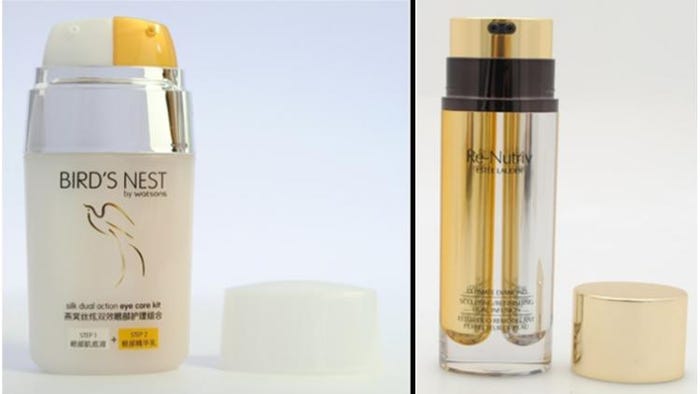October 1, 2015

When people queue, the popular adage is “age before beauty.” But among consumers at retail, functionality, freshness and, foremost, the ability to dispense 100% of beauty and personal care (BPC) products are the packaging attributes for which they stand in line. In many cases, consumers are also seeking BPC products that perform multiple functions, and often times that means packaging must do double duty as well.
Mintel data shows there is rarely a beauty or personal care product category today where consumers are not interested in multifunctional products. In the U.S. and U.K., almost half of consumers use between four and eight different skincare products, and both men and women are looking for products in a specific category that perform more than one function.
For example, 60% of U.S. consumers who buy and use anti-aging skincare products choose products that provide such multiple benefits as anti-aging and moisturizing. In the sun care category, for example, according to Mintel’s 2014 US Sun Protection and Sunless Tanners report, 71% of U.S. sun care users express interest in sun protection with anti-aging benefits.
However, beyond interest in products that perform dual functions, consumers are also looking for packaging that does the same. In Mintel’s 2014 UK Beauty and Personal Care Packaging Trends report, close to one in five consumers would like to see packaging that incorporates a second function. Slightly less than 9% are interested in dual-compartment packaging. While that may seem like a small percentage, it’s with good reason.
Unlike automotive or lawn/garden products, beauty and personal care brands rarely use on-pack messaging to communicate to consumers that the product they are selecting comes in a dual-chamber container. Full body shrink sleeve labels also contribute to hidden or even covert dual-chamber packs. In other cases, brands use clear packaging, which allows packaging to speak for itself—often further reinforcing the notion that the product has “dual advantages”, and therefore, reinforcing the value proposition of the product but without the need to market the dual-pack functionality.
Where dual-chambered packs are sought after is among mass and prestige brands, where these specific-use packs allow consumers to effectively dispense two products at once or mix them prior to use, which often either increases the product efficacy or helps extend the number of uses.

From Malaysia, Watson’s line of eye and skin care kits (left) feature a dual-chamber pack that separates the ingredients and instructs consumers on how to effectively dispense and use the two-step beauty care product. At right, Estée Lauder Re-Nutriv Ultimate Diamond uses a highly visual dual-chamber pack for its skincare infusion product. Here, the brand has chosen to feature the attributes of two separate ingredients that are mixed together during dispensing.
Dual-chamber packaging is only one of the ways that packaging can support multifunctional beauty and personal care products. While it has been used by many brands already, there are definitely opportunities for brands to enhance this pack type by combining with other packaging technologies, such as airless packaging for example.
But without doubt, the attribute consumers are particularly interested in is packaging that affords the ability to dispense or evacuate 100% or as near 100% of the product as possible. According to MWV’s (now WestRock’s) Packaging Matters Packaging Satisfaction Index (PSI), 63% of consumers say the ability to easily dispense product is a key attribute of importance.
In its original 2013 PSI, across all end-categories, 65% of consumers said the ability to dispense 100% of the product was an important attribute, versus just 12% who indicated they are satisfied with packaging performance against that attribute.
Now-entrenched purchasing habits that carry over from the 2008-2009 recession, mean consumers are still frugal, and still looking to stretch the fewer purchasing dollars at their disposal. That means the ability to use every last drop or dollop of product is critical, especially to the repurchase decision.
But today, and for the foreseeable future, no conversation about dispensability in beauty and personal care would be complete without mentioning the growing popularity of airless dispensing systems, and pump-on-tube, plastic bag-on-valve, springless, dual-chamber airless and even airless jars. While Mintel doesn’t track airless spray systems specifically, it has recorded a 20% increase in airless dispensing systems within the BPC, household and pet care markets between January 2010 and December 2014.
One of the key attributes of airless systems, and again, bag-on-valve systems in particular, is their ability to evacuate, in most cases, all of the product. For brands seeking to sate consumers’ thirst for more environmentally friendly packaging, the perception that airless is a better alternative is an attractive marketing tool. The combination of 100% dispensing and a more environmentally friendly package is an attractive proposition, and one that builds both brand equity and brand loyalty.
For example, Nordictan (left in the top photo) was the first skincare product to embrace the SprayPET plastic airless technology from APPE, a plastic aerosol claimed to deliver a lower carbon footprint than tinplate or aluminum versions, as well as being fully recyclable. And the MiiSTS 11ml credit-card-size pack (right in the top photo) uses a micro-thin airless pump and valve systems to dispense up to 150 doses of product.
This article was co-authored by Viktorija Gnatoka and David Luttenberger.
Viktorija Gnatoka is a packaging analyst at Mintel, where she covers food, drink, beauty/personal care and household products. She has more than 8 years’ experience in brand development and private label packaging. She can be reached at [email protected].
David Luttenberger is the global packaging director at Mintel. He has 24 years’ packaging experience. He can be reached at [email protected]. You can also follow him on Twitter at @packaginggeek.
About the Author(s)
You May Also Like


